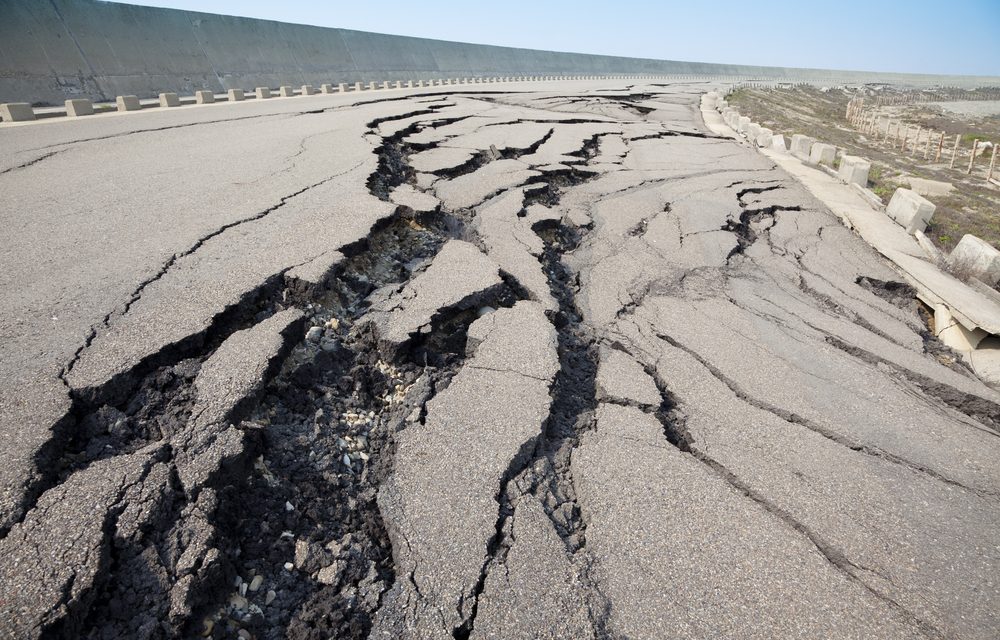It has taken years to finally admit it, but the U.S. Geological Survey has just confirmed that three million Americans are at risk from human-induced earthquakes caused by wastewater disposal, a process in fracking, in 2017.
The study was focused on the U.S. Central East, primarily on Oklahoma and Kansas, who don’t normally get large earthquakes. Due to wastewater disposal however, their risk is now equal to that of California.
“Between 1980 and 2000, Oklahoma averaged about two earthquakes greater than or equal to magnitude 2.7 per year. However, this number jumped to about 2,500 in 2014, 4,000 in 2015 and 2,500 in 2016. The decline in 2016 may be due in part to injection restrictions implemented by the state officials. Of the earthquakes last year, 21 were greater than magnitude 4.0 and three were greater than magnitude 5.0,” the USGS said.
The report concluded that wastewater disposal from fracking is triggering larger quakes, and the drop of larger quakes is due to restrictions on fracking.
“Wastewater injection may have decreased in 2016 as a result of new regulations for its disposal, or slowed due to lower oil prices and less overall production,” the USGS said.
During the fracking process, wastewater is disposed of by injecting it deep into underground wells at high pressure. That water fills up dormant faults, causing tectonic plates to slip which enables the quakes, according to the USGS.
“Earthquakes have been linked to oil and gas activity for more than five decades, but in recent years the rate of tremors has shot up across the United States in areas where drilling and waste from the production occur,” Bill Ellsworth Stanford University geophysics professor said.
In 2015, the Oklahoma government’s energy and environment cabinet introduced a website dedicated to the evidence that fracking causes earthquakes.
“Oklahoma experienced 623 magnitude 3+ earthquakes in 2016, 903 in 2015, 579 in 2014 and 109 in 2013,” the website stated.
Even Oklahoma’s Governor Mary Fallin has acknowledged that the wastewater disposal process in fracking may be the cause of Earthquakes.
In 2015, Fallin called the Oklahoma Geological Survey’s endorsement of that relationship “significant” and stated that the state was dealing with the problem.
During the same year, the USGS found that manmade earthquakes were being caused in eight states including – Alabama, Arkansas, Colorado, New Mexico, Ohio, Texas, Oklahoma, and Kansas.
Besides the unpredictable tremors from manmade earthquakes, there is another danger from fracking.
That other danger is methane venting and leakage, which the EPA has downplayed according to a whistleblower who claimed that at least one EPA researcher accepted payments from the oil and gas industry.
“There has been a persistent and deliberate cover-up that has prevented the agency from requiring the natural gas industry to make widespread, urgently needed and achievable reductions in methane venting and leakage (’emissions’) across the nation’s expanding natural gas infrastructure,” NC WARN wrote.
“Dr. David Allen, then-head of EPA’s Science Advisory Board, has led an ongoing, three-year effort to cover up underreporting of the primary device, the Bacharach Hi-Flow Sampler, and a second device used to measure gas releases from equipment across the natural gas industry. Allen is also on the faculty of the University of Texas at Austin, where he has been funded by the oil and gas industries for years.”
Additionally, North Carolina’s senate has banned disclosure of the chemical that is used in fracking under the Energy Modernization Act in 2014. Under the bill, disclosing the chemical is a Class I felony, punishable by months in prison.
According to the American Petroleum Institute (API) the Fracking fluid is more than 99 percent water and sand. The other chemicals are alleged to be ethylene glycol, borate salts and isopropanol, while the rest are trade secrets, the API has said.
Two states have officially banned fracking – New York and Maryland. Maryland is limited until later this year, while New York is permanent.
A seven-year study conducted in New York found that “fracking’s effects on water, air and soil are inconsistent, incomplete and raise too many red flags,” prompting their ban.
Obama used executive authority to ban new Atlantic and Arctic offshore drilling in federally owned waters shortly before leaving office, using the Outer Continental Shelf Lands Act, a 1953 law that allows a president to put certain waters off-limits to oil and gas production companies.











Sign up on lukeunfiltered.com or to check out our store on thebestpoliticalshirts.com.